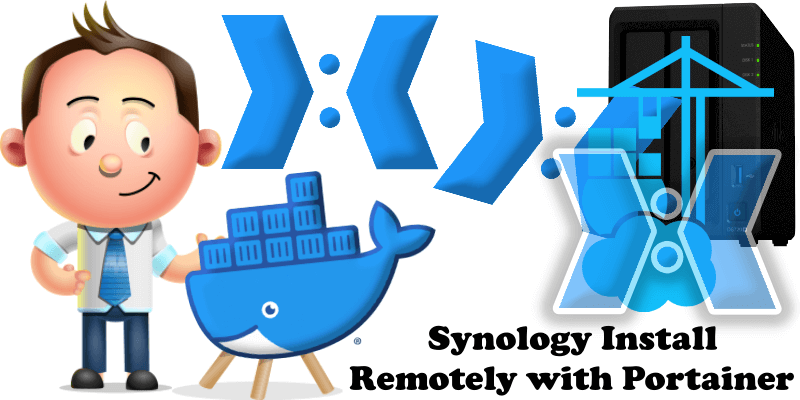
My previous guide for Remotely involved the use of Task Scheduler. Today I’m offering a recommended and excellent alternative for installing the latest Remotely version via Portainer. Remotely is a smooth remote control, remote scripting, and rich auto-complete to maximize your IT support efficiency. The Remotely client has two parts: the service and the remote control. The service is responsible for maintaining a persistent connection to the server and executing remote commands. The remote control is launched as needed for remote control sessions. Both applications make outgoing web socket connections over secure SSL/TLS protocol. Because the connections are outgoing, you don’t need to open any ports in your firewall, and the service won’t accept any incoming connections. In this step by step guide I will show you how to install Remotely on your Synology NAS using Docker & Portainer. If you need an alternative for Remotely, check out my RustDesk guide.
STEP 1
Please Support My work by Making a Donation.
STEP 2
Install Portainer using my step by step guide. If you already have Portainer installed on your Synology NAS, skip this STEP. Attention: Make sure you have installed the latest Portainer version.
STEP 3
Go to File Station and open the docker folder. Inside the docker folder, create one new folder and name it remotely. Follow the instructions in the image below.
Note: Be careful to enter only lowercase, not uppercase letters.
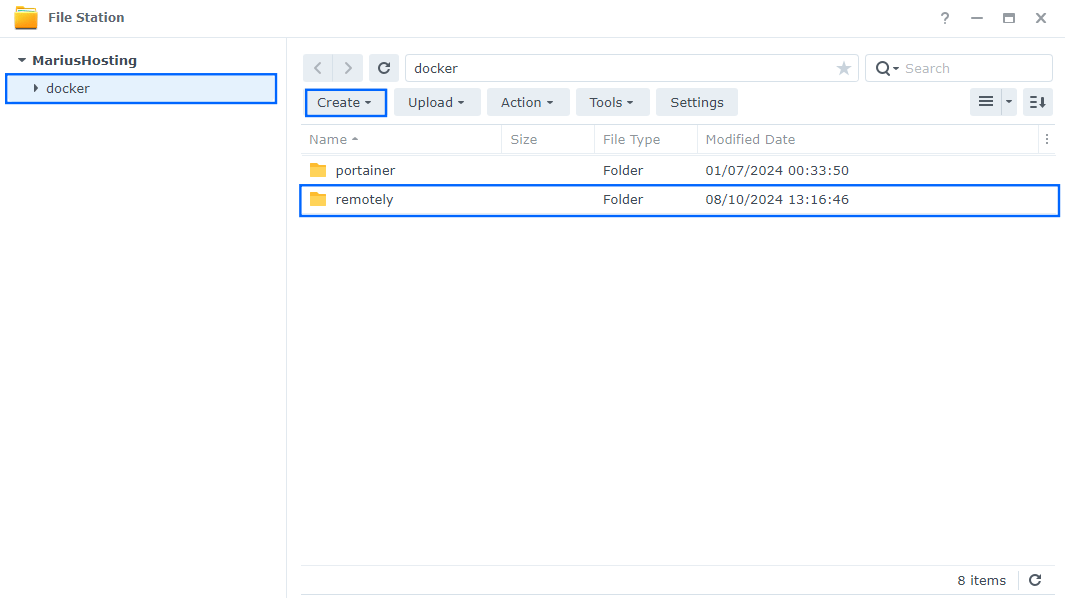
STEP 4
Log into Portainer using your username and password. On the left sidebar in Portainer, click on Home then Live connect. Follow the instructions in the image below.

On the left sidebar in Portainer, click on Stacks then + Add stack. Follow the instructions in the image below.

STEP 5
In the Name field type in remotely. Follow the instructions in the image below.
services:
remotely:
container_name: Remotely
image: immybot/remotely:latest
healthcheck:
test: timeout 10s bash -c ':> /dev/tcp/127.0.0.1/8080' || exit 1
interval: 10s
timeout: 5s
retries: 3
start_period: 90s
mem_limit: 4g
cpu_shares: 768
security_opt:
- no-new-privileges:false
restart: on-failure:5
ports:
- 5371:8080
volumes:
- /volume1/docker/remotely:/app/AppData:rw
environment:
- Remotely_ApplicationOptions__DbProvider=SQLite
- ASPNETCORE_ENVIRONMENT=Production
- Remotely_ConnectionStrings__SQLite=Data Source=/app/AppData/Remotely.db
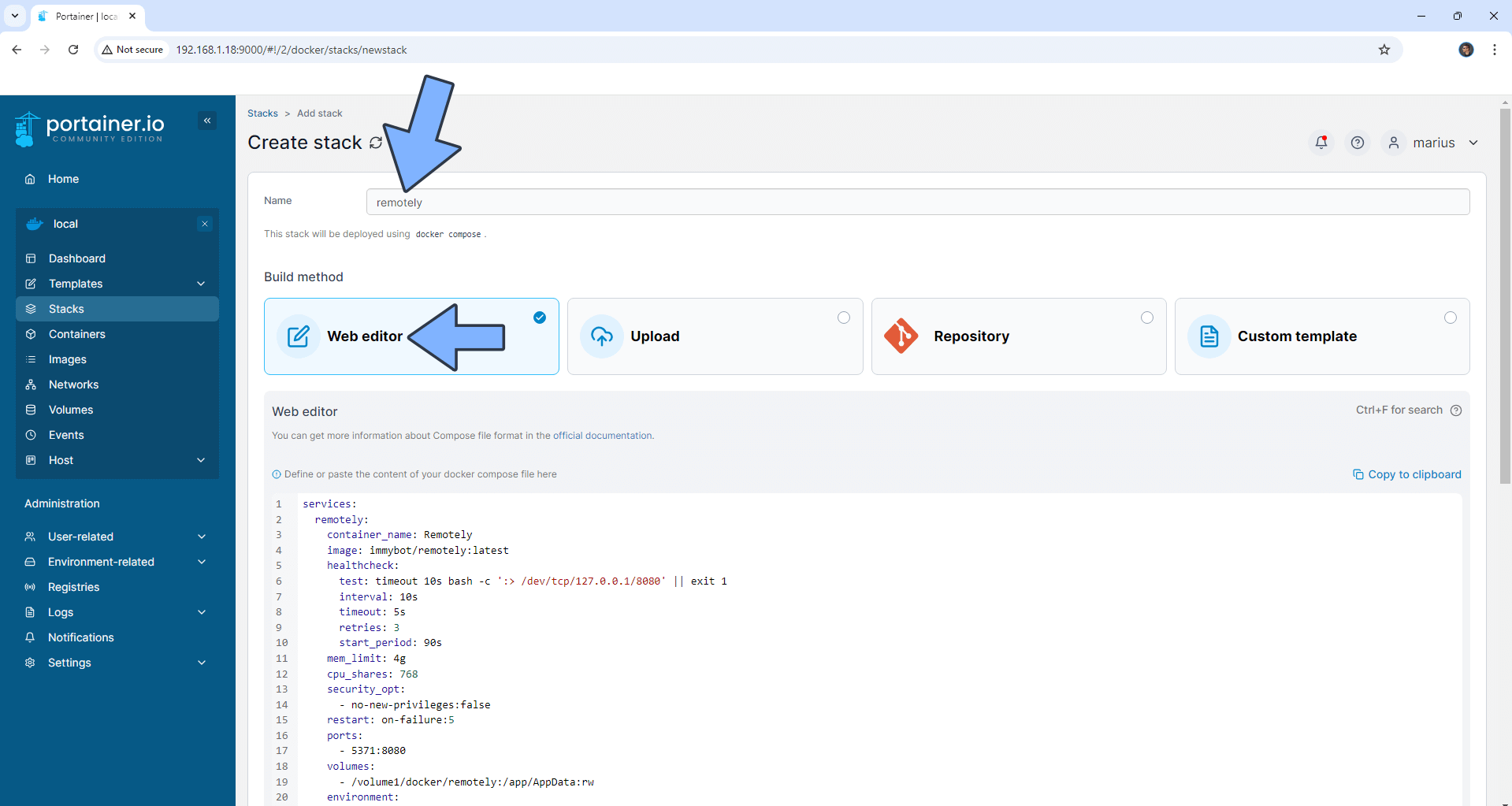
STEP 6
Scroll down on the page until you see a button named Deploy the stack. Click on it. Follow the instructions in the image below. The installation process can take up to a few minutes. It will depend on your Internet speed connection.
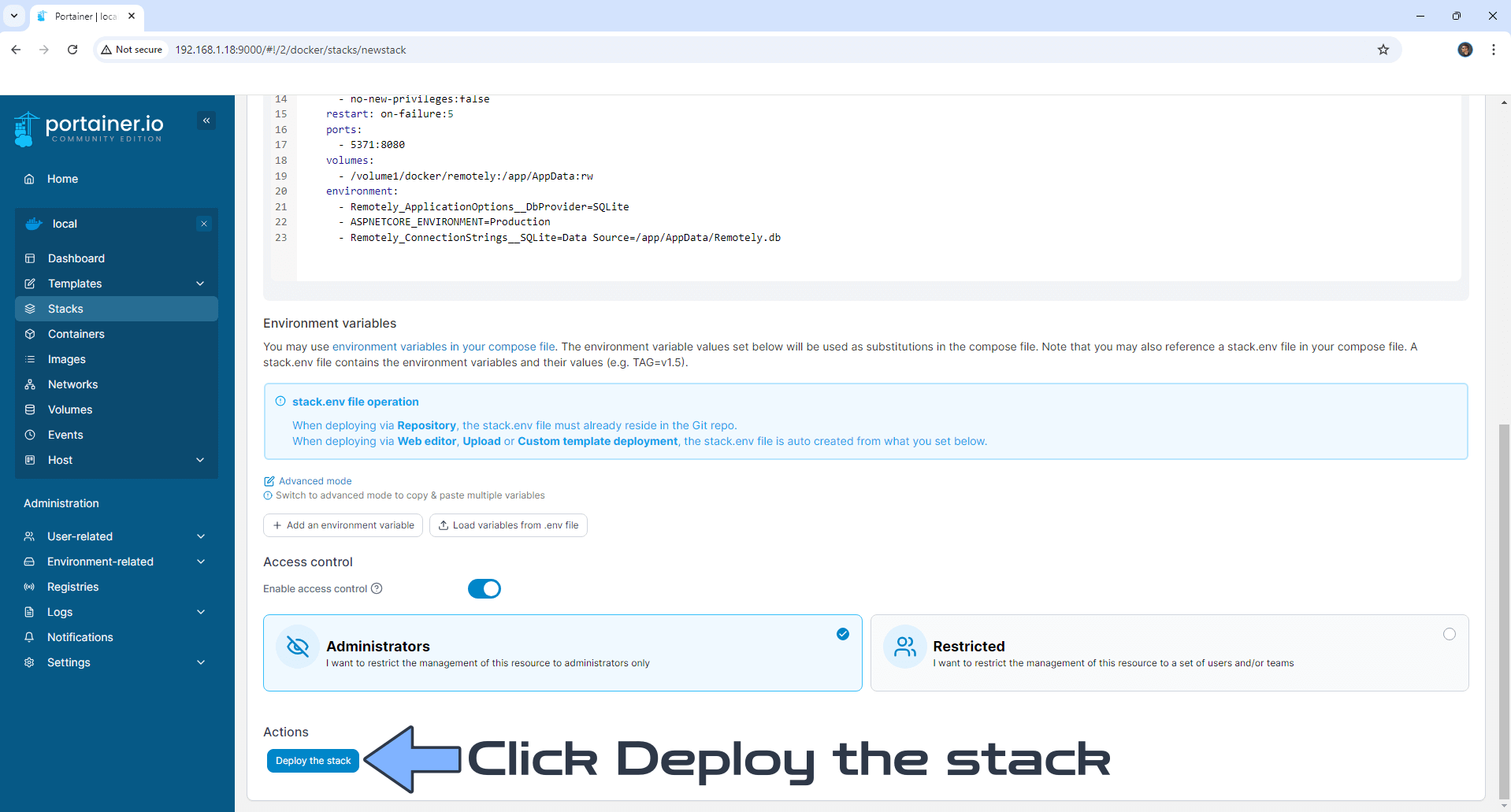
STEP 7
If everything goes right, you will see the following message at the top right of your screen: “Success Stack successfully deployed“.

STEP 8
🟢Please Support My work by Making a Donation. Almost 99,9% of the people that install something using my guides forget to support my work, or just ignore STEP 1. I’ve been very honest about this aspect of my work since the beginning: I don’t run any ADS, I don’t require subscriptions, paid or otherwise, I don’t collect IPs, emails, and I don’t have any referral links from Amazon or other merchants. I also don’t have any POP-UPs or COOKIES. I have repeatedly been told over the years how much I have contributed to the community. It’s something I love doing and have been honest about my passion since the beginning. But I also Need The Community to Support me Back to be able to continue doing this work.
STEP 9
The installation process can take up to a few seconds/minutes. It will depend on your Internet speed connection. Now open your browser and type in http://Synology-ip-address:5371 Click Register. Follow the instructions in the image below.
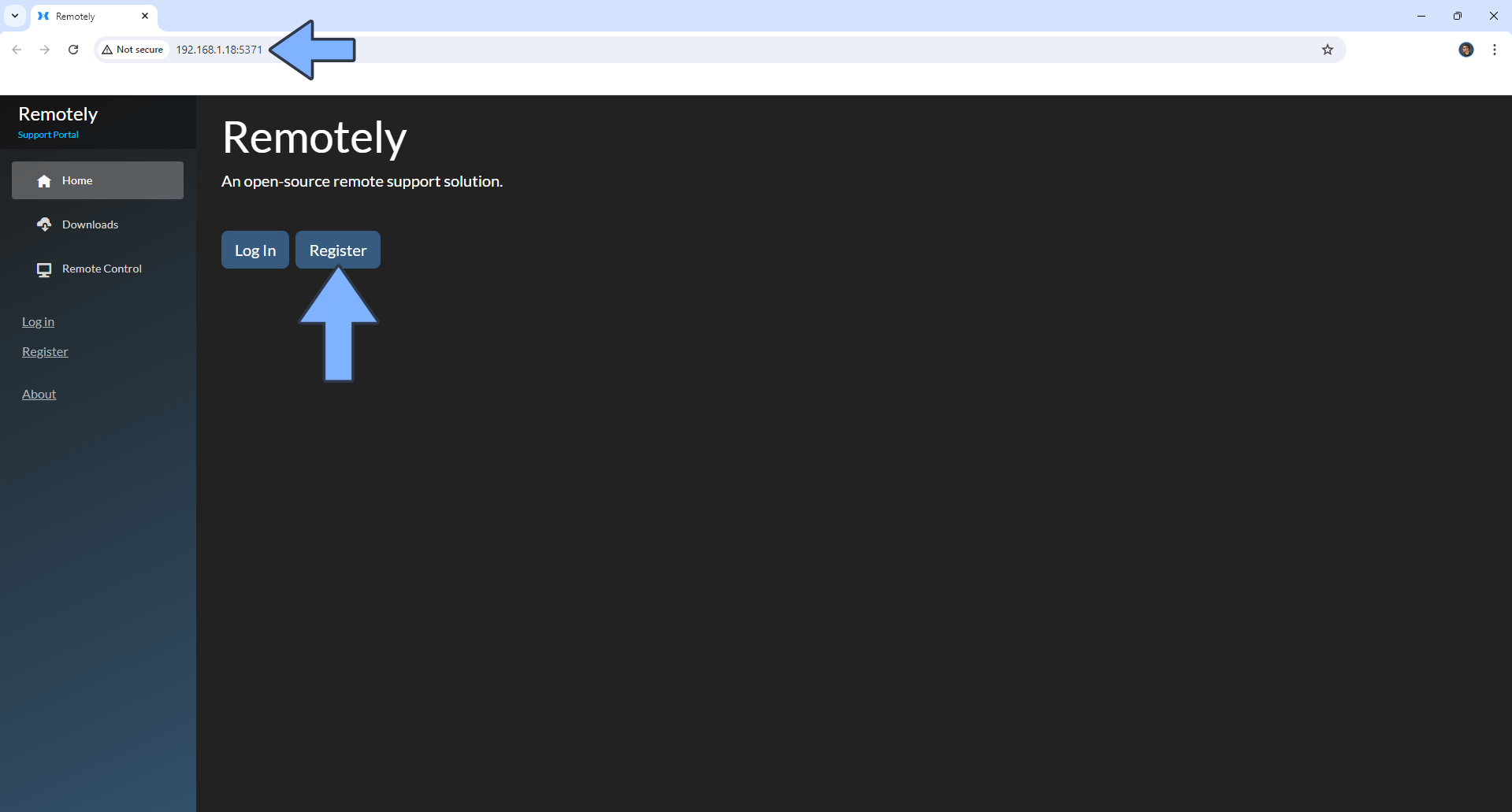
STEP 10
Add your own Email and Password then click Register. Follow the instructions in the image below.
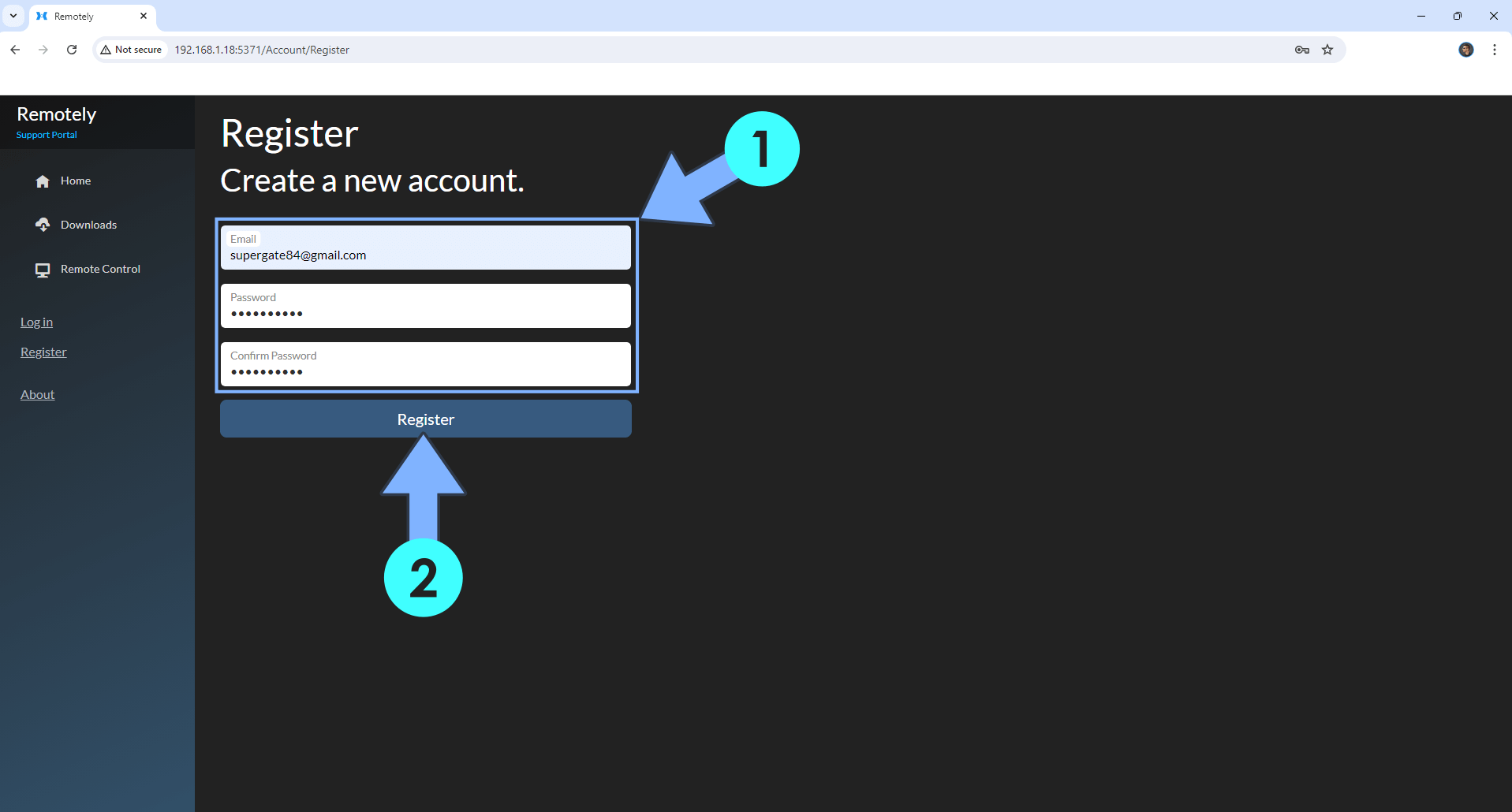
STEP 11
On the left sidebar click Download to download Support Clients. Follow the instructions in the image below.
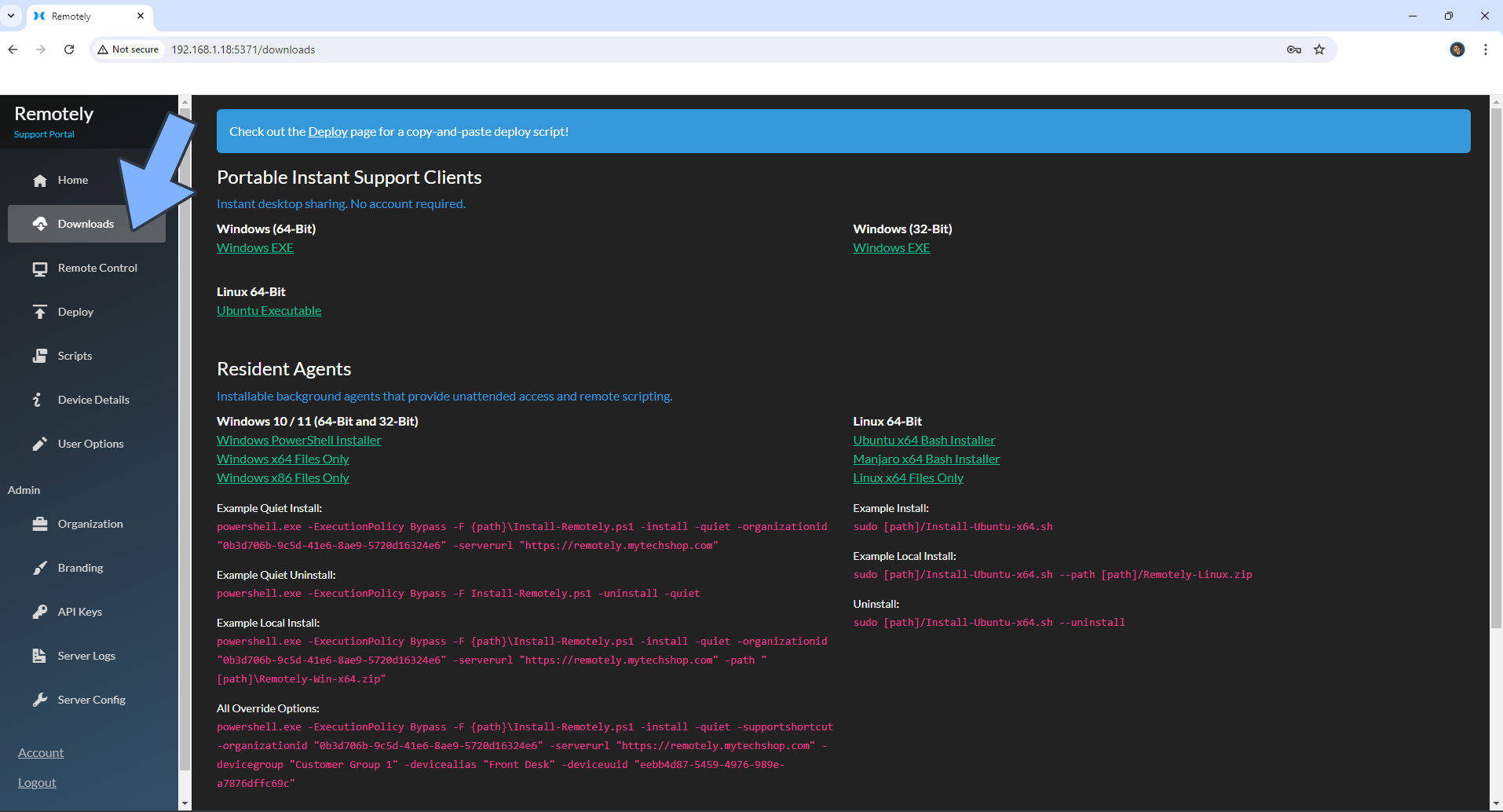
Enjoy Remotely!
If you encounter issues by using this container, make sure to check out the Common Docker issues article.
Note: If you want to run the Remotely container over HTTPS, check How to Run Docker Containers Over HTTPS. In order to make Remotely work via HTTPS, it’s mandatory to activate WebSocket.
Note: Can I run Docker on my Synology NAS? See the supported models.
Note: How to Back Up Docker Containers on your Synology NAS.
Note: Find out how to update the Remotely container with the latest image.
Note: How to Free Disk Space on Your NAS if You Run Docker.
Note: How to Schedule Start & Stop For Docker Containers.
Note: How to Activate Email Notifications.
Note: How to Add Access Control Profile on Your NAS.
Note: How to Change Docker Containers Restart Policy.
Note: How to Use Docker Containers With VPN.
Note: Convert Docker Run Into Docker Compose.
Note: How to Clean Docker.
Note: How to Clean Docker Automatically.
Note: Best Practices When Using Docker and DDNS.
Note: Some Docker Containers Need WebSocket.
Note: Find out the Best NAS Models For Docker.
Note: Activate Gmail SMTP For Docker Containers.
This post was updated on Thursday / November 27th, 2025 at 9:32 PM
